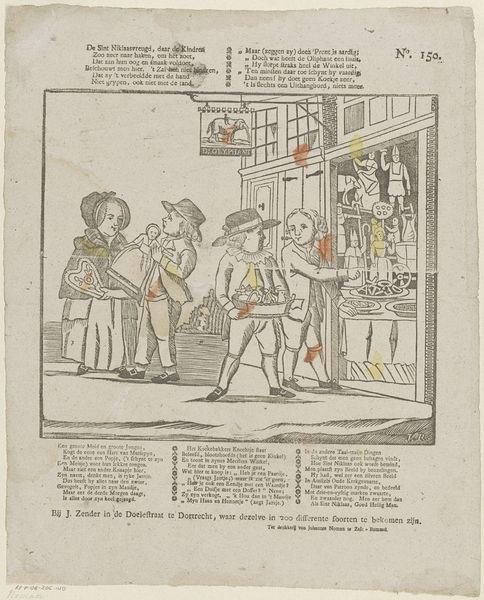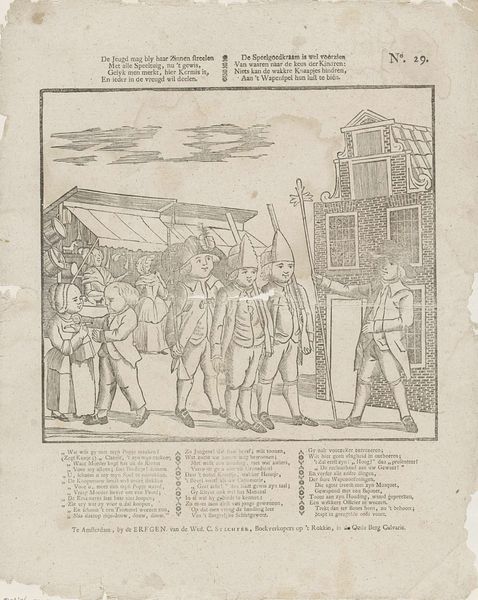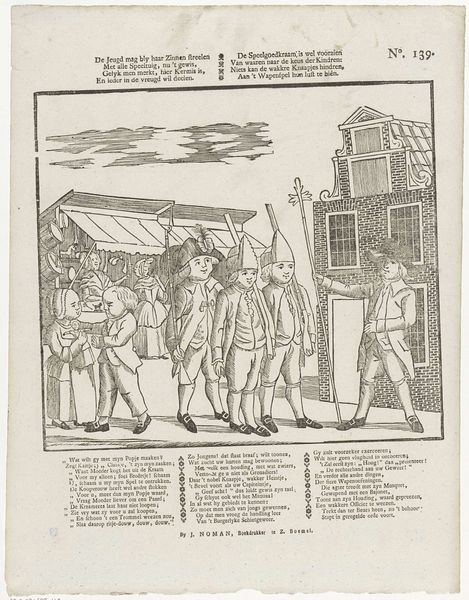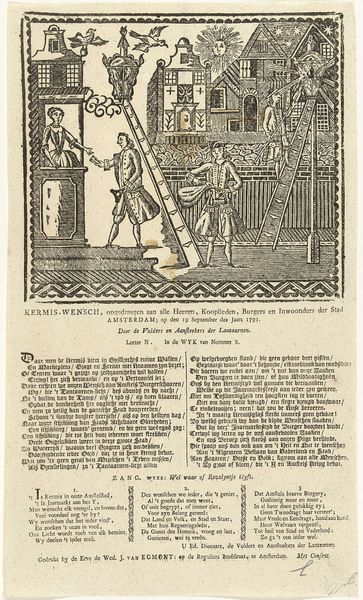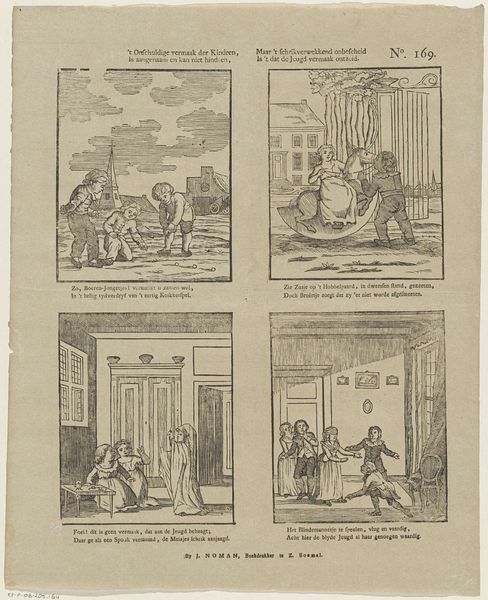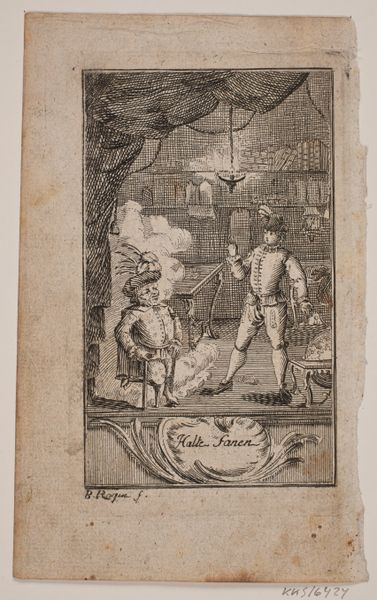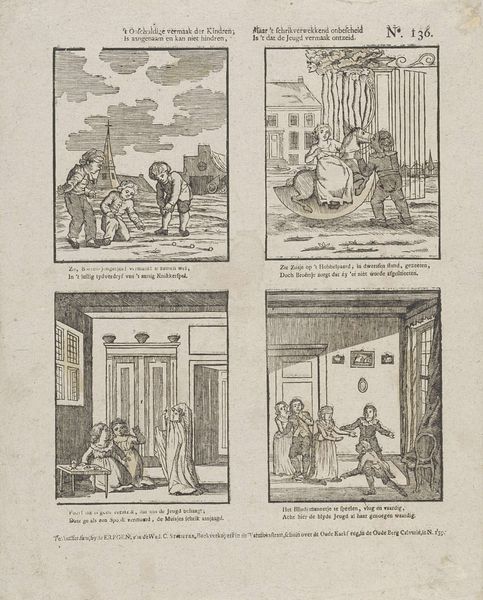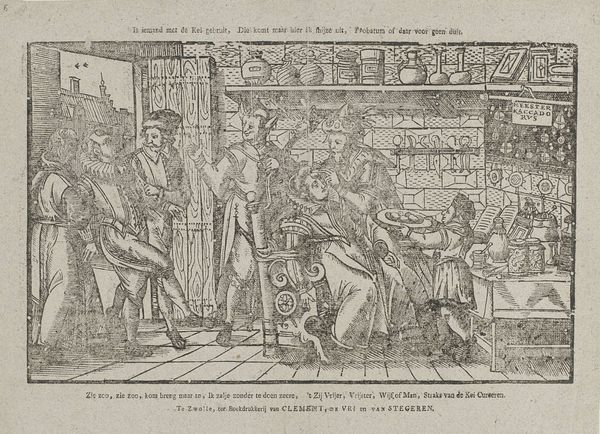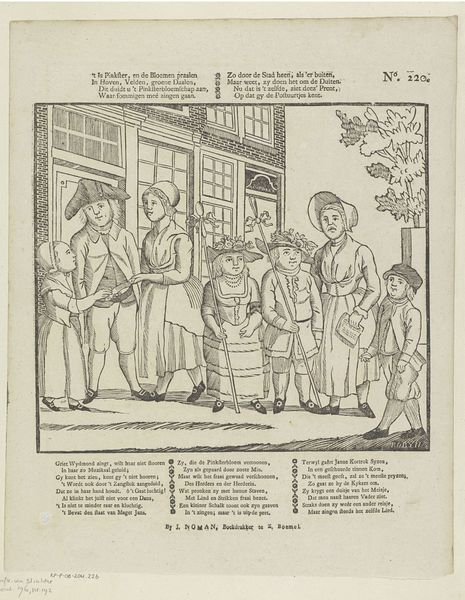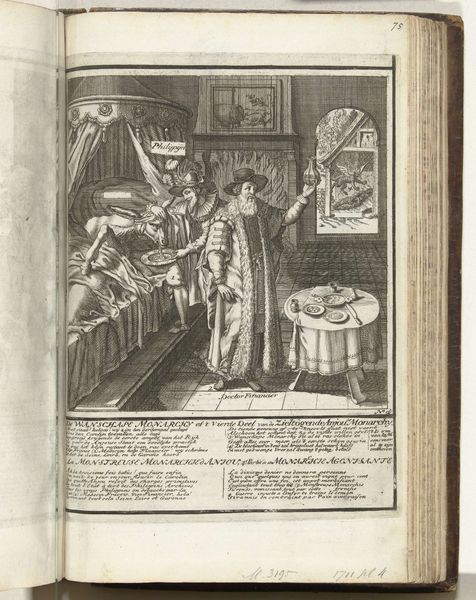![De Sint Niklaasvreugd, daar de kindren / Zo zeer naar haaken, om het zoet [(...)] by J. Robyn](/_next/image?url=https%3A%2F%2Fd2w8kbdekdi1gv.cloudfront.net%2FeyJidWNrZXQiOiAiYXJ0ZXJhLWltYWdlcy1idWNrZXQiLCAia2V5IjogImFydHdvcmtzLzgxZTBiMWZmLTM1ZDMtNDRiMi04ZDQ3LTdlMjQ4YWQxZDUxZi84MWUwYjFmZi0zNWQzLTQ0YjItOGQ0Ny03ZTI0OGFkMWQ1MWZfZnVsbC5qcGciLCAiZWRpdHMiOiB7InJlc2l6ZSI6IHsid2lkdGgiOiAxOTIwLCAiaGVpZ2h0IjogMTkyMCwgImZpdCI6ICJpbnNpZGUifX19&w=3840&q=75)
De Sint Niklaasvreugd, daar de kindren / Zo zeer naar haaken, om het zoet [(...)] 1715 - 1813
0:00
0:00
print, engraving
#
portrait
#
narrative-art
#
dutch-golden-age
# print
#
figuration
#
child
#
line
#
cityscape
#
genre-painting
#
engraving
Dimensions: height 415 mm, width 336 mm
Copyright: Rijks Museum: Open Domain
Curator: Here we have "De Sint Niklaasvreugd, daar de kindren / Zo zeer naar haaken, om het zoet [(...)]", an engraving by J. Robyn, dating from between 1715 and 1813, part of the Rijksmuseum collection. Editor: My first impression is sweet anticipation. You've got this quaint cityscape with children clustered around a shop brimming with toys and treats. It feels meticulously crafted but slightly off-kilter with that distinctive etched linework, wouldn’t you say? Curator: I think the slight distortion only adds to the piece’s charm. Robyn captures a scene from daily life, a genre painting if you will, focused on the joy and expectation surrounding Saint Nicholas Day. The material is particularly interesting to me. Engravings like this weren't just decorative. They were affordable multiples connecting people across economic divides, acting as a sort of social glue. Editor: Absolutely, these prints were part of a booming media industry, making imagery accessible to a wider public. You see this in the poem written above. It describes this desire the children have in such fine language! Yet look at the shop itself; you have what appears to be gingerbread, dolls. The artist isn't just presenting a feast for the eyes, but an array of artisanal products fueling both desire and economy. And look at how the products themselves almost overshadow the architecture! It's a clear sign of commerce and production having power. Curator: That said, there's something to be said for its playful, almost childlike composition. The lines are simple, unrefined, yet they convey a real sense of movement and emotion, no? Editor: Yes, but even the apparent simplicity involves deliberate material choices. Copper engraving allowed for fine detail, while the application of color was likely piecework, distributed amongst different workshops. We need to consider how these works were fabricated! It’s an early form of industrialized image-making. Curator: A collaborative endeavor shaped by commercial concerns, I agree, but that does not change my appreciation for this small peek into what a long-ago winter season looked like! The artist must have understood childhood delight so well, or simply desired to memorialize this fleeting moment of joy, don't you think? Editor: Maybe, though I'm more compelled by how these kinds of printed images reshaped and standardized festive experiences across the Dutch Republic, intertwining tradition, commerce, and visual culture. I find it's a very efficient object of display and influence!
Comments
No comments
Be the first to comment and join the conversation on the ultimate creative platform.
